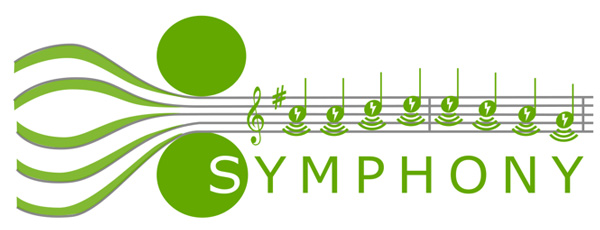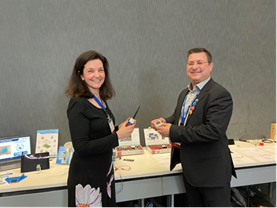
Figure 1 Lorandt Foelkel (Wurth Elektronik eiSos GmbH & Co. KG) and Cristina Rusu (RISE) at the EnerHarv22 event in USA. ©SYMPHONY – RISE
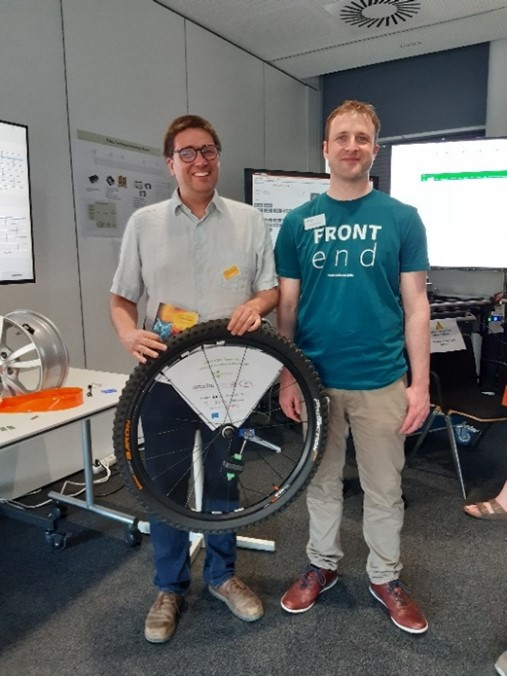
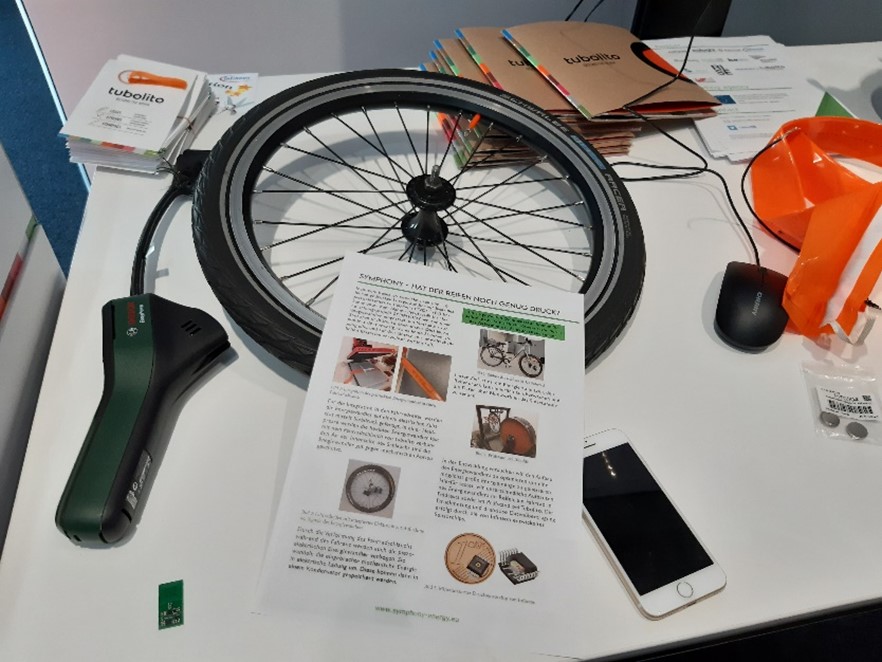
Figure 2 Jonas Groten (Joanneum Research) and Christoph Schertz (Infineon) showing the bicycle tires with integrated electronics for recording the signals of the energy converter and promotional materials. ©SYMPHONY – JOR
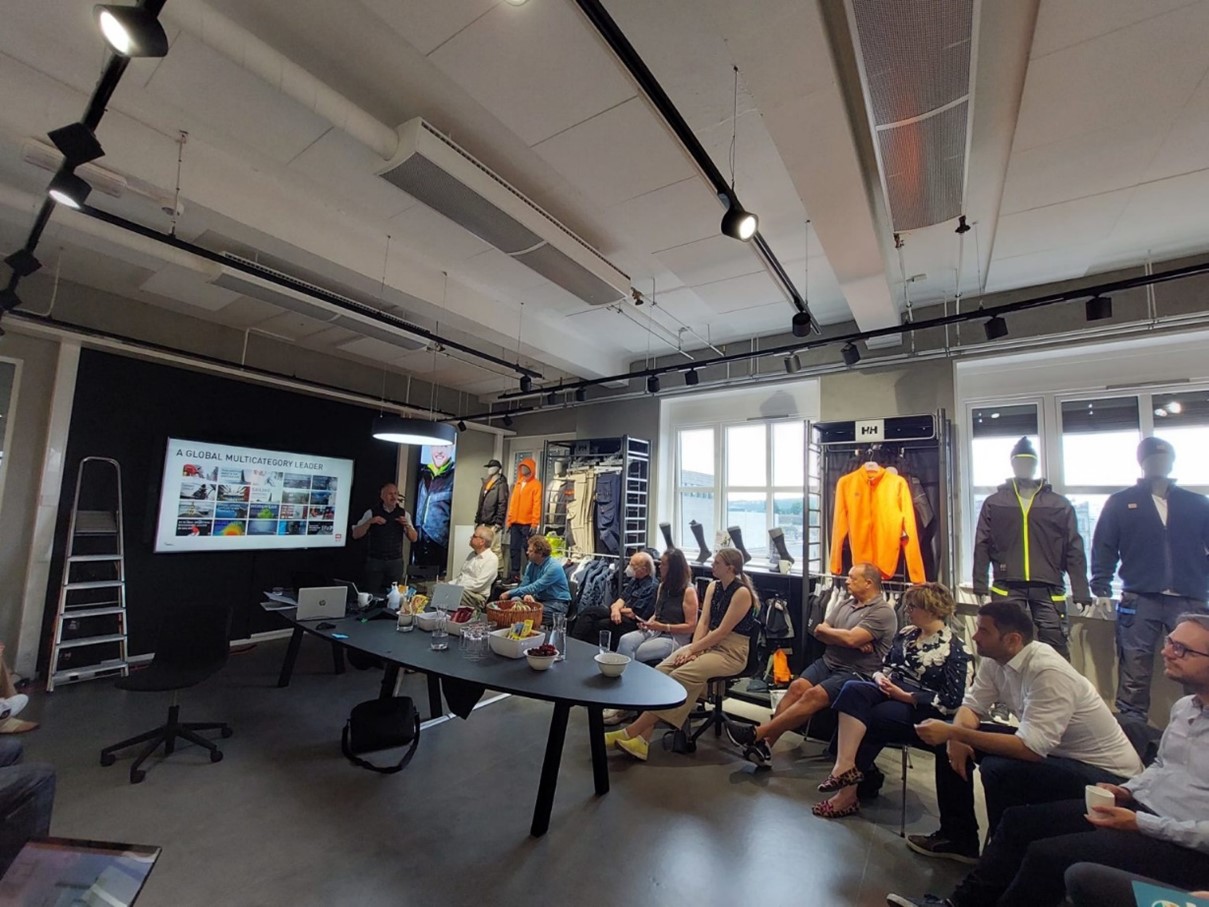
Figure 3 Participants to the Smart Energy Supply Platform Workshop, held at Helly Hansen in Oslo (Norway) on 29th June 2022. ©SYMPHONY – RISE
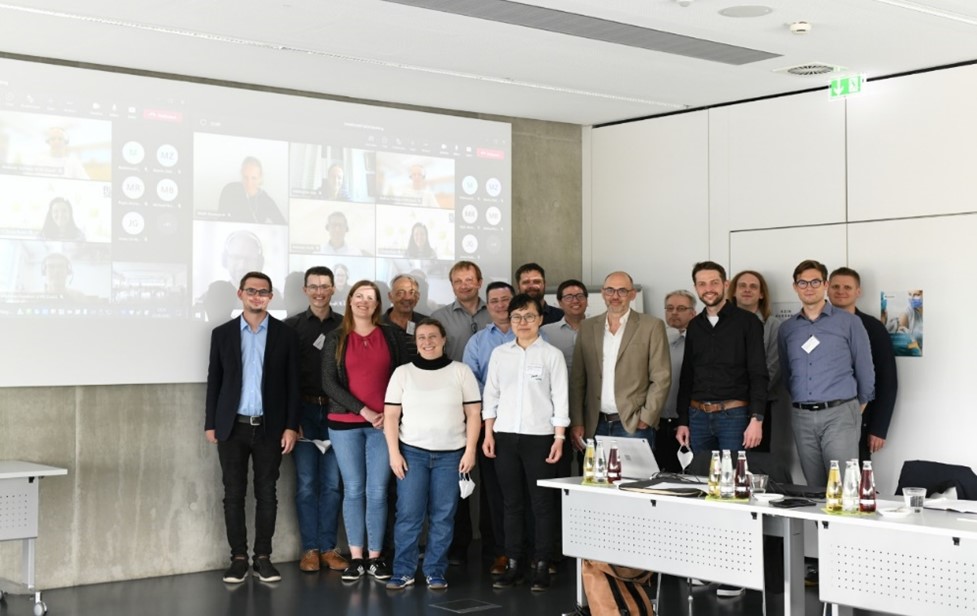
Figure 4 Photo of the participants (both in person and remote connection) to the SYMPHONY meeting held in Würzburg on 23-24 May 2022 ©SYMPHONY – ISC
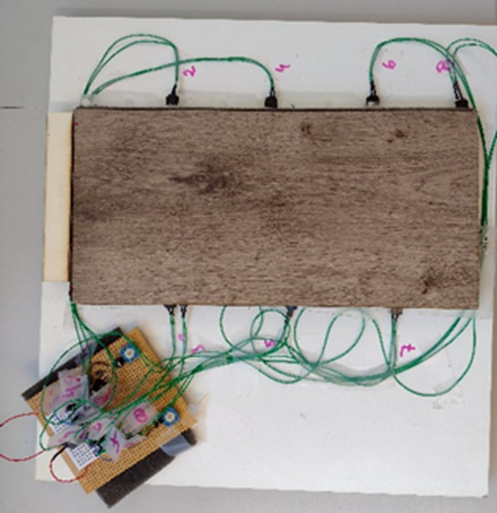
Figure 5 Preliminary tile demonstrator for the SYMPHONY smart floor use case ©SYMPHONY – JOR
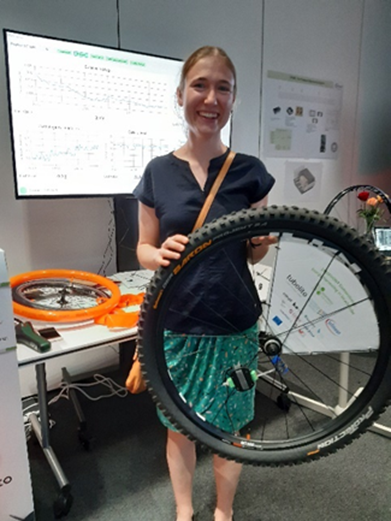
Figure 5b Preliminary SYMPHONY bicycle demonstrator shown at the Night of Research on 20th May 2022 in Graz ©SYMPHONY – JOR
Comments or questions?
Please contact Michèle Posch, the Dissemination Manager:
[psfb id=“921″ title=“Kontaktformular“]
The project SYMPHONY was recently promoted in several international events. In April 2022 Cristina Risu (RISE) presented the miniaturised energy harvesting technologies developed at RISE at the Second International Energy Harvesting Workshop “EnerHarv22” in North Carolina (USA). During the lecture the combination of piezoelectric and magnetoelectric nanogenerators, under investigation in the SYMPHONY project, was presented. Lorandt Foelkel (Wurth Elektronik) was also attending the event and had the opportunity to show the preliminary energy harvesting powered sensors/IoT devices developed within the project.
On 20th May 2022, at the Infineon facility in Graz (Austria), during the long night of research, Jonas Groten (Joanneum Research) and Christoph Schertz (Infineon) had the opportunity to present to a broad public the preliminary results of the SYMPHONY bicycle demonstrator, built in collaboration with Tubolito. Due to the deformation of the bicycle tube while riding, the piezoelectric energy converters developed by Joanneum are also bent. They convert the mechanical energy introduced into electrical charge. These can then be stored in a capacitor. At the event all the participants had the opportunity to test how a capacitor charges when the bicycle tire deforms, and the results were shown in a display. A specific brochure was created and distributed to explain that the SYMPHONY goal for such demonstrator is to use the energy, continuously monitor the tire pressure and send the data to the smartphone via Bluetooth, through a miniaturized sensor chip developed by Infineon.
The video is available in NextCloud: https://nxc.joanneum.at
SYMPHONY has also established collaborations with other EU funded projects such as the H2020 Smart2Go (https://smart2go-project.eu), InComEss (https://www.incomess-project.com/home), and Fast Smart (http://www.fast-smart.org/index.php). All these projects are dealing with different energy harvesting solutions. On 29th June 2022, the SYMPHONY coordinator Jonas Groten was invited to participate to the Smart Energy Supply Platform Workshop organized by Smart2Go in Oslo (Norway). The SYMPHONY use cases were presented to both in person and online participants also including the finalists of the Smart2Go design contest, who had the opportunity to make questions concerning the possibility to integrate the SYMPHONY piezo, tribo and magnetoelectric generators in many different applications.
SYMPHONY will continue to disseminate its results in several upcoming events. You can find us at EPE’22 ECCE Europe (https://epe2022.com/) in Hannover (Germany) on 5-9 September 2022 and at the 2022 E-MRS Fall Meeting and Exhibit (https://www.european-mrs.com/meetings/2022-fall-meeting) that will be held in Warsaw University of Technology, from September 19 to 22.
SYMPHONY updated results and first demonstrators!
During the last SYMPHONY meeting, held on 23-24 May 2022 in Würzburg and hosted by Fraunhofer ISC, several progresses both at materials and process level were discussed. These included the main achievements related to the development of the stretchable piezoelectric nanogenerators (PENG), combined piezo- and triboelectric (TENG) nanogenerators, magnetoelectric nanogenerators (MENG), rectifiers, supercapacitors, printed polymer batteries, stretchable conductors, and materials used in flexible islands.
A paper focused on the SYMPHONY magnetoelectric nanogenerator was published in the Nature Scientific Reports Journal (https://www.nature.com/articles/s41598-022-09171-3). Another paper focused on the power management system for the piezoelectric nanogenerators was prepared by Wurth Elektronik in collaboration with Joanneum and will be available in the book of proceeding of the EPE’22 ECCE Europe (https://epe2022.com/) event. It is interesting to notice that some of the results from the development of the P(VDF-TrFE) based materials are so innovative that are considered as a subject for Intellectual Property protection (i.e., patent).
The preliminary results of the three SYMPHONY demonstrators were presented on 23rd May and positive comments were received from the SYMPHONY Business Interest Group in terms of potential exploitation of the results and alignment with the current market needs. In particular, for the wind turbine use case, a preliminary sample of resonating cantilever was shown together with the first wind excitation results. The developed cantilever is similar to the structure developed for the smart floor use case and allowed the construction of a preliminary tile demonstrator. The tile demonstrator was shown during the meeting, and excitation tests (knocking on the tile) were done to demonstrate the voltage generation. A preliminary demonstrator for the pressure monitoring in bicycle use case was developed using the PVDF sensors and the commercially available electronics provided by Infineon. The real time measurement of the generated energy by bouncing the wheel was also shown.
